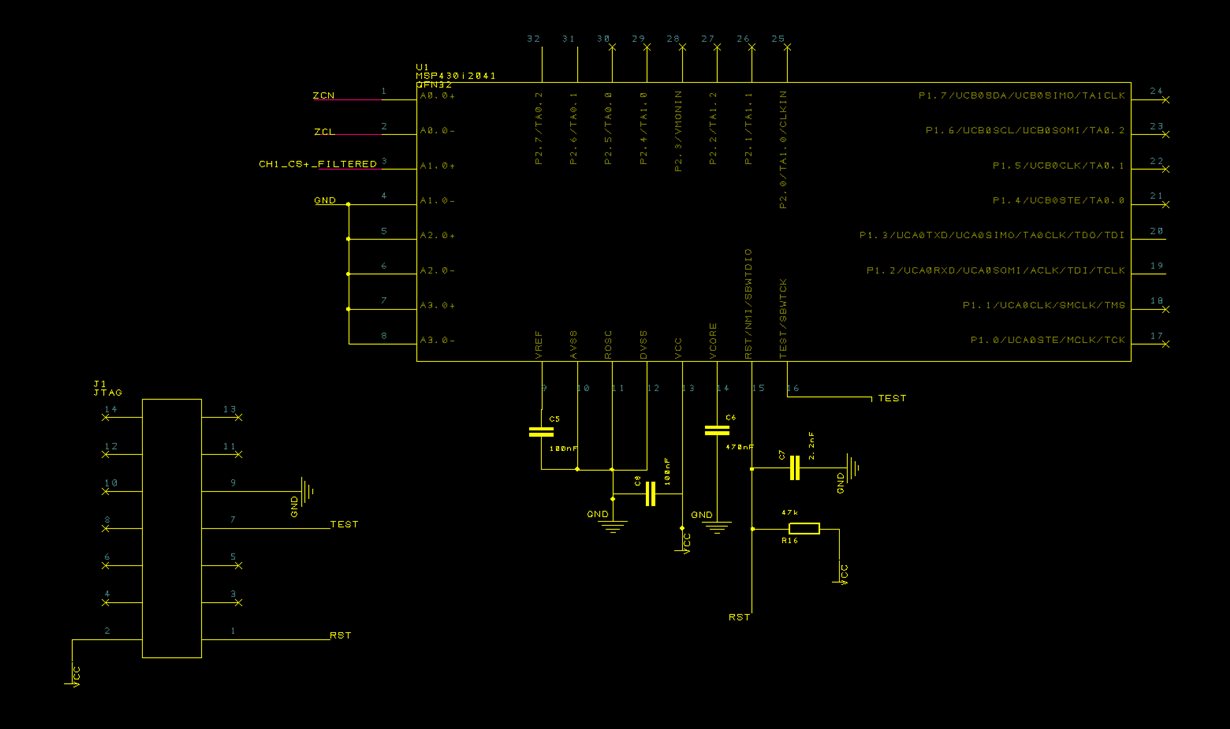Hi Gurus,
I seem to be having issue with programming the msp430i2041. I am using MSP-FET430UIF (firmware version: 3.04.03.004). The FET is working fine with other chips (I checked with MSP430G2955). I am connecting the FET directly to my board - Please check the schematic attached below. When I try to program it via CCS I get message "device unknown". Please help! I tried so far to replace the chip on the board but the result is the same.
Couple of questions I have already that maybe you have immediate answer:
1) Can I keep JTAG pins 5(TMS), 3(TDI), 11(RST/NMI) floating or should I pull them to the GND?
2) How does FET detects that I'll be using the SBW instead of 4wire JTAG?
Regards,
Michal


